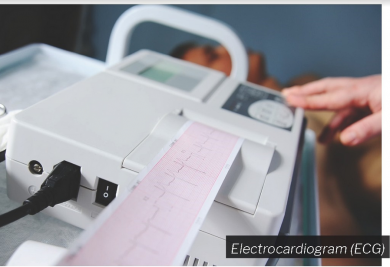
Cardiac Arrhythmia : a ticking time bomb
By employing new technologies like the cutting-edge Loop Recorder, medical professionals at

An invisible threat
Many patients who suffer from cardiac arrhythmia (irregular heartbeat) are unaware of the dangers that the condition may pose on their health because there are often no identifiable symptoms. By definition, the group of conditions that fall under ‘arrhythmias’ describe heart rates that are too fast (tachycardia), too slow (bradycardia), or fluctuates between both states (flutter or fibrillation). These abnormalities can affect patients of any age,
patients are those who have been diagnosed with a rapid heart rate and have opted to use medication to treat the condition. However, the situation becomes complicated when the prescribed medication causes the heart to fluctuate between beating too slow and too fast.
Initial examinations
Dr Apichai Phokawattana is a cardiac physician who specialises in arrhythmia cases. He explains that it is of utmost importance for patients to visit a hospital for an examination if they have any suspicion that they are suffering from an irregular heartbeat. At the hospital, an initial test is carried out using an electrocardiogram (ECG) that records the heart’s electrical activity using electrodes placed on the skin. As the test compares voltage to time, doctors can then evaluate the fluctuations in the heart’s rhythm in order to identify the kind of arrhythmia affecting the patient. However, as this test only records the heart rate over a short period of time, it can be difficult to detect irregularities in certain cases. Dr Apichai estimates that over 80% of arrhythmia patients will arrive at the hospital and will no longer experience the symptoms or abnormalities they were feeling earlier, as certain arrhythmias can become symptomatic for one to three minutes and then subside.

Treating complex cases
For more complex cases, professionals at
This is when medical professionals will implement the newly developed Loop Recorder. This implantable heart- monitoring device is approximately the size of a paperclip and is inserted via a small incision so that it sits under the chest’s skin. The device then begins to record an individual’s heart rhythm and sends the data to doctors through a wireless transmission signal, allowing them to monitor the information remotely, and identify when the heart rate accelerates, slows down or exhibits abnormal behaviour. The information is of equally high quality when compared to data collected by an ECG or Holter Monitor, but because the device can stay in place for up to three years, it allows doctors a much larger window of time to evaluate data, and therefore, come to a conclusion about the cause of the irregularity.

Dr Apichai explains that this is particularly helpful when trying to avoid the complications of an irregular heartbeat. For example, atrial flutter or atrial fibrillation (AF) is categorised by
Consequently, doctors recommend arrhythmia patients to use the Loop Recorder to monitor their hearts consistently so that these risks are minimised. The procedure itself is advantageous as it only takes five minutes to


